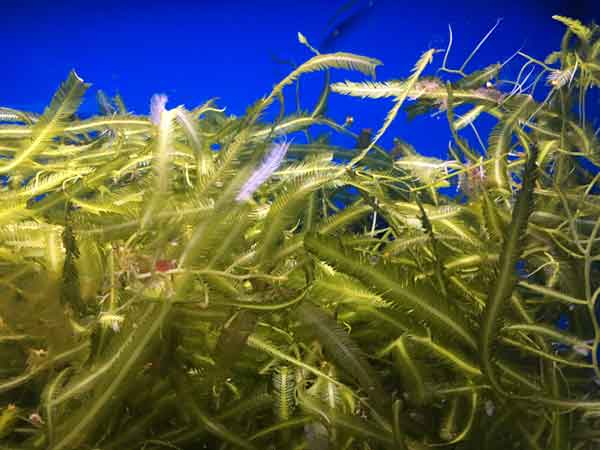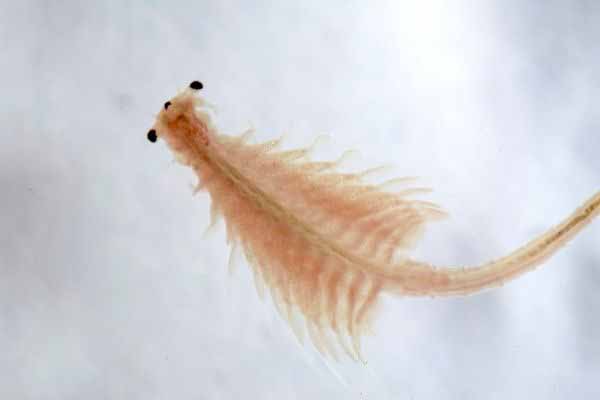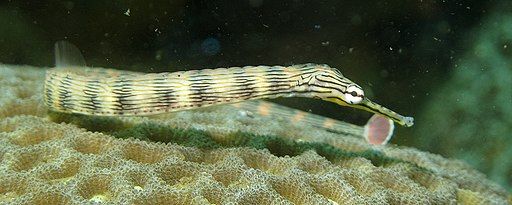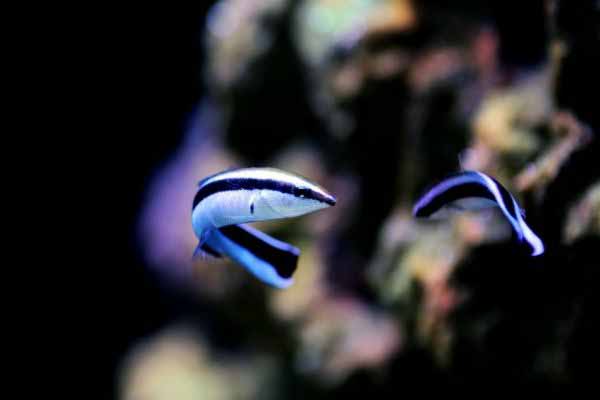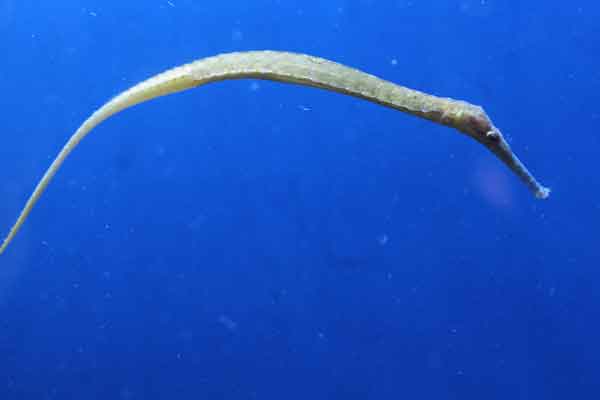[ad_1]
Pipefish are adorable and popular saltwater aquarium fish. Caring for them in a home aquarium can be extremely challenging, but expert aquarists report great success caring for them in a home aquarium. Let’s review some of the most important aspects of caring for them in a saltwater tank.
Pipefish care guide table of contents
You can use the following links to jump right to the Pipefish care guide question on your mind or keep scrolling
Introduction to Pipefish care
Pipefish available in the aquarium trade are mostly wild-caught (though some hobby breeders have seen some success and there is hope that this might change in the future). Because of their shy nature, reluctance to eat prepared foods (at least at first), need for regular feedings, and incompatibility with many other reef aquarium species, Pipe fish are attractive, enticing, but best left to expert aquarium-owners.
The two most common types of pipefish in the aquarium trade are dragon faced and flagtail. Both come in a variety of species and there are some differences in care and compatibility between the two types.
Pipefish quick care guide facts
- Common names: Dragonfaced pipefish, Messmate pipefish, Flagtail pipefish, Banded pipefish, or Pipe fish
- Scientific names:Corythoichthys sp.,Doryrhamphus sp., and Dunckerocampus sp.)
- Family: Syngathidae family (same family as the Seahorses)
- Size: ~7-8 inches (18-21 cm), long, thin bodies
- Minimum tank size: ~20 gallons (76 liters)
- Reef safe: yes
- Care or experience level: Best left to the experts
- Preferred diet: Live copepods or zooplankton-like foods (copepods, amphipods, mysis shrimp, brine shrimp, larvae, etc.)
- Original part of the world: South Pacific or Indo-Pacific reefs
 Natural habitat
Natural habitat
The most commonly available Pipefish come from the reefs in the Indo-Pacific or South Pacific Ocean regions. Similar or the same habitats as seahorses. These are generally protected habitats with slow-moving water, seagrasses or macroalgae, gorgonians, sponges, or other submerged structures.
Because of their poor swimming abilities (they only have a dorsal fin and in most species, this is small and not very effective for locomotion) they tend to drift around on currents using seagrass for cover and camouflage to avoid predation.
Swimming and locomotion
Unlike most other fish you would consider keeping in your aquarium, Pipe fish have rigid bodies and propel themselves through the water pretty much with just the help of their dorsal fins, as you can see in this video here:
a
Pipefish care and feeding
Pipefish (like many wild-caught aquarium specimens) may be difficult to care for in an aquarium and have a hard time transitioning from eating live food to a frozen diet. Many sources say they can be weaned onto frozen food, but there is also a lot of failures, which is a good reason to use caution before buying one of these species.
Live foods are generally able to entice shy or reluctant feeders to dine.
Because of their size, shape, and armored appearance, it is hard to know if your Pipe fish care has been sufficient. With most other saltwater fish species, you can tell right away if an individual is malnourished or otherwise not getting enough to eat, but that may be a lot more difficult to notice, with pipefish.
An individual could be malnourished and it would be difficult to notice until the problem is completely out of control. As such, it is important to properly feed them and watch their eating habits closely to ensure they are getting enough nutrition
What do pipefish eat?
Pipefish are notoriously finicky eaters, which is perhaps the biggest reason they are labeled as expert-only saltwater fish. They prefer to eat live foods: copepods (including red bugs), mysis shrimp, brine shrimp and are also likely to enjoy any planktonic larvae you’re lucky enough to have floating around in your tank, from your ornamental shrimp or clean up crew.
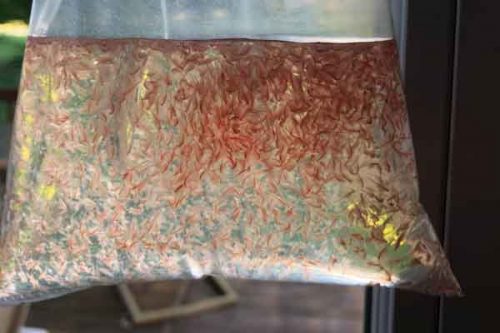
Raising your own copepods is a viable option. Also, keeping a variety of reproducing clean-up crew species can help add “food” to your tank. Pipe fish will happily snack on shrimp, crab, snail, and polychaete larva floating around in the tank.
Popular frozen food options, for those pipefish that can be trained to take frozen foods, are mysis shrimp, cyclop-eeze and brine shrimp.
Their picky eating habits coupled with how easy it is to accidentally starve them is one of the main reasons they are considered “expert only” fish by many hobbyists. Their food requirements affect most of the aspects of their care.
Placement in the tank
A well-established tank with lots of living rock and a healthy microfauna population is a minimum requirement for your pipefish. They don’t require a lot of space/volume, so a 20-gallon tank should suffice.
Because they are poor swimmers they need a tank with gentle currents for them to get around on. Fantails are considered to be the best of the Pipe fish in regard to swimming because of their large fantail, but they are still at the mercy of the current.
They are shy and require a lot of places to hide. Because they are good at camouflage they will hang out upside down in the tank with lots of seagrasses mimicking their surroundings. Their need for hiding spaces can also cause some issues with pumps and overflows.
It’s best to cover every opening in the tank, but if one goes missing, checking the sump and overflow is always a good place to start.
Compatibility
As mentioned throughout this article, pipefish are amazing, gorgeous, delicate, and peaceful creatures that inhabit quieter, calmer parts of the ocean than some of the more vibrant, active, bold reef individuals.
As such, planning out the invertebrates and fish to keep with your Pipe fish is an important step towards having great and long-lasting success.
Great species to keep with pipefish
Macroalgae
Having a Pipe fish or seahorse aquarium may be the one time you can get really excited about keeping macroalgae, like Halimeda, Caulerpa, or Ulva, and not be so worried about controlling it or calling it problem algae.
Invertebrates
Gorgonians are a great, natural sessile vertebrate that can add interest and attractive dimension to your saltwater aquarium. Pipefish will also do well with any other non-stinging corals you wish to keep, although since you will probably be feeding larger quantities of brine shrimp, mysid shrimp, etc., you may want to keep it towards the easier-to-care-for LPS or Soft Coral types.
Fish
The best saltwater aquarium fish species to keep in a pipefish aquarium would be Seahorses, the Mandarin goby dragonet, or other small, non-cleaner gobies, like the Clown goby, Yellow watchman goby, etc.,
Species to avoid keeping with pipefish
When it comes to successfully caring for pipefish in a reef tank, there is a long list of saltwater aquarium fish and invertebrates that are not compatible to keep with Pipe fish. See the specific sections below for more information.
Invertebrates
Pipefish are slow-swimming, docile creatures that aren’t always in total control over where they are swimming. Therefore it is recommended to not care for them in the same tank as any other stinging invertebrates, including the Elegance coral or any Anemones.
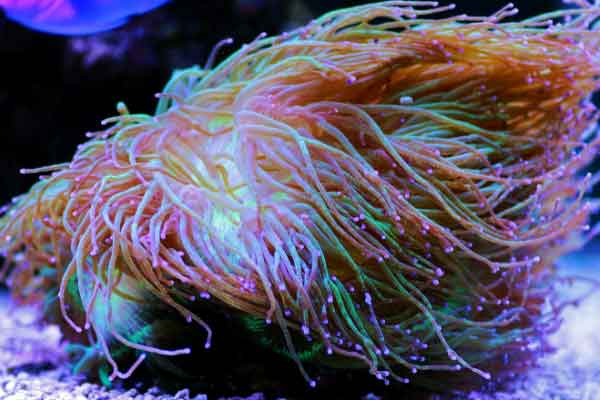
The stinging tentacles of Elegance corals can hurt Pipefish
Fish
There is a long list of saltwater fish that are not recommended to be kept with pipefish. You are essentially trying to prevent caring for them in the same aquarium as any fish species that are:
- So fast-eating that they will outcompete the Pipe fish to the point of starvation
- Predators of the pipefish that will quickly dine on them
- Nippers or cleaners that will pester these shy fish, literally to death.
Fast-eating fish
Here is a brief, non-exclusive list of the type of fish considered to be so fast-eating that they would be considered incompatible with keeping pipefish:
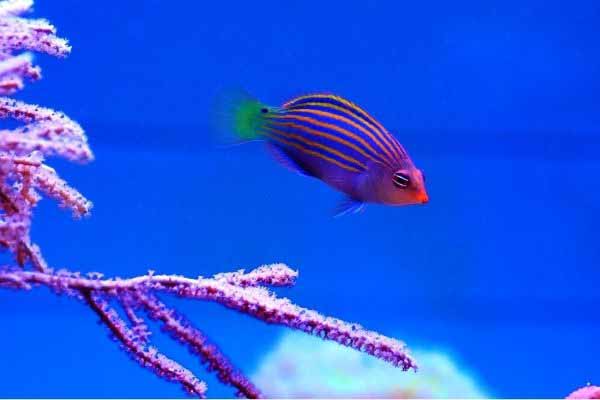
Active wrasses like the 6-line are not compatible with pipefish
Predators
Of course, you always want to avoid keeping pipefish (or any other fish) with a natural predator that would turn them into an expensive treat. The following predators are considered incompatible with pipefish:
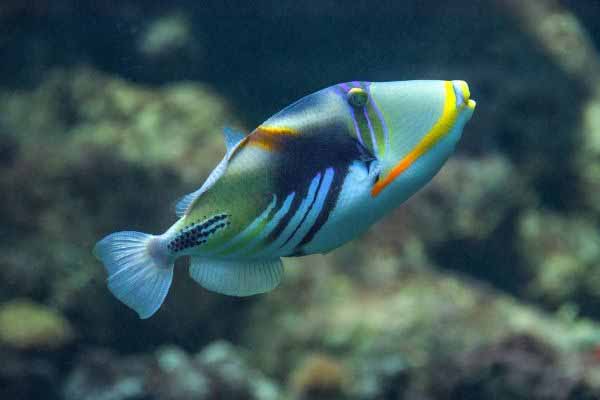
Triggerfish like this one may try to eat your Pipe fish
Nippers/cleaners
This last group is a lot less troublesome than the first two, although also considered to be incompatible with pipefish. The reason is that these over-active cleaner-type fish will potentially chase, pester, and peck the poor Pipe fish until they are so stressed they succumb to infection.
That means no:
Reproduction
Some kinds of Pipe fish can be easily sexed while others are harder and in some cases nearly impossible to tell the difference.
Because of their tendency to hide and the fact that a lot of their defining sex traits are on their bellies, transferring them into small specimen tanks to have a look at their bellies (and or attempting to photograph them in their larger tank) is often necessary. Compatibility issues can make knowing the sex of your fantail Pipe fish particularly necessary and checking before you leave the fish store is definitely suggested.
As far as breeding pipefish goes, it is important to remember that, similar to their seahorse cousins, the male fish is the one that keeps the eggs. The female will lay her eggs into the pouch on his underbelly, and he will hold on to them until they hatch.
At least one online breeder (Jim Welsh), has had success breeding Pipe fish in captivity. His system involved catching the fry as soon as they hatched and raising them on live copepods and other plankton until they were fully-grown before forcing them to switch to frozen food.
The BBC did a 3-minute clip about the breeding habits of the banded pipefish. It covers the courtship and spawning displays, morning bonding rituals, and hatching of the amazing larvae.
Diseases
Pipefish and seahorses are highly susceptible to two problematic fish diseases: white boil disease and Brooklynella.
White boil disease
White boil disease is an often fatal fungal infection caused by Glugea heraldi, which can infect the skin and organs. The namesake white or grey boils may show on the skin and the fish would become lethargic, ultimately succumbing to the disease.
Brooklynella
Brooklynella is caused by a ciliated protozoan parasite that infects the skin and gills. Infected pipefish should be treated with formalin and malachite green in a dedicated hospital tank.
Conclusions
Hopefully, you’ll agree that Pipefish are exquisite, gentle, amazing creatures. I just re-watched the BBC piece again and am blown away by the courtship and bonding shown between a monogamous pair. However, please consider that these fish are best left for the experts, due to their gentle disposition and finicky eating. While I don’t have any inside information here, based on all the progress we have seen, in recent years, with respect to making breeding breakthroughs, I wouldn’t be surprised if readily available aquacultured Pipe fish are not far away.
They exist today but are not all that commonly available.
So for now, let’s leave them in the ocean and for the experts.
For more information
- If you want to keep the Pipe fish in your home, it may be helpful to brush up on growing your own brine shrimp.
- As mentioned earlier, they have very similar care needs to the mandarin goby
- Or perhaps you would be better served with picking up a pair of captive-raised seahorses, for now.
- If expert-only fish are your thing, you may be interested in learning more about the (completely different but equally challenging to feed) ribbon eel.
What are your thoughts?
What are your thoughts about keeping the pipefish? Have you had any personal experiences?
This research was enough to keep this one off my shopping list, how about you?
References
Michael, Scott W. Marine Fishes: 500+ Essential-to-Know Aquarium Species. TFH Publications. Neptune City, NJ: 2001.
Michael, Scott W. Reef Fishes: Volume 1: A Guide to Their Identification, Behavior and Captive Care. TFH Publications. Neptune City, NJ: 2001.
[ad_2]
Source link

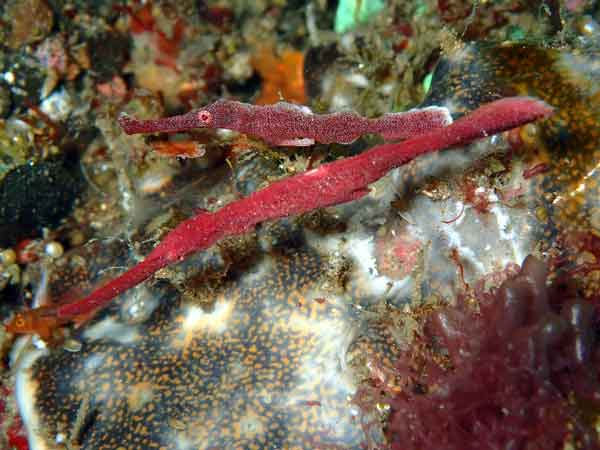
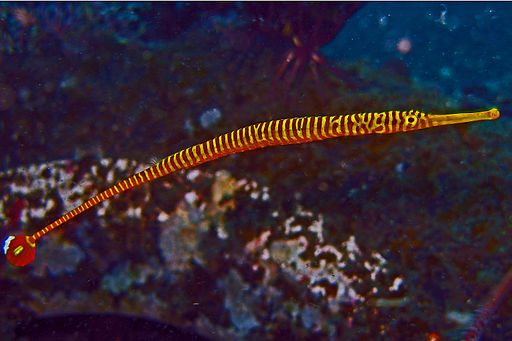 Natural habitat
Natural habitat